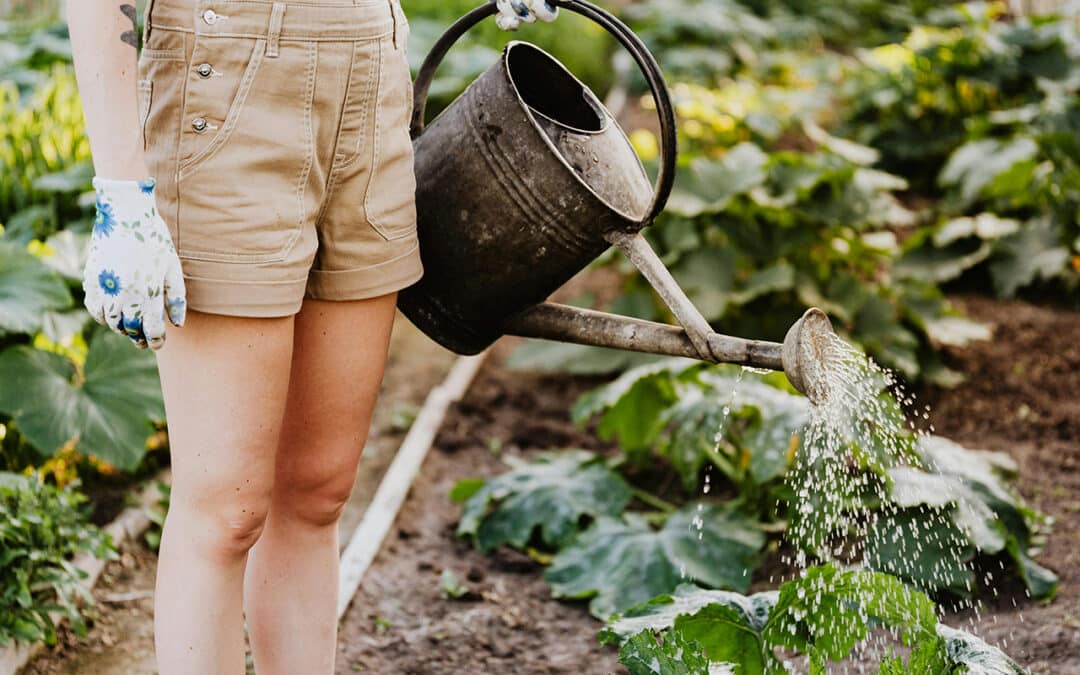Every garden, no matter its size, can practice mindful sustainability. But what does that mean for your garden and the harvest you produce? What sustainability practices can you implement in an urban garden?
Why Sustainability Matters
Practicing sustainability allows us to minimize waste, conserve natural resources, and minimize the environmental impact of our actions. A more eco-friendly garden has less overall impact, with less contamination of food or water supplies. Smarter resource use is especially critical where space is at a premium. As we implement more sustainability techniques, we gain an intimate knowledge of how our food is grown, improve our self-confidence with the hands-on efforts to create gardens, and even save money through resource conservation and self-sufficiency.
10 Easy Sustainability Practices in the Small Garden
There are many simple ways to introduce greater sustainability to your garden. While each technique may not be suitable for every garden, popular and widespread options include…
- Mindful Use of Space – Space is one of the most limited of small garden resources, and making better use of every inch of growing space is essential to maximize the harvest and improve sustainability. Even a tiny garden can create space by adding tiers, hanging baskets, or vertical structures to the growing area. Planning combination pots with similar care needs as well as choosing dwarf, compact, or miniature cultivars will also make better use of the available space.
- Composting – Enrich your urban garden without extra chemicals when you embrace composting. You don’t need a large compost pile to nurture your plants, and even small, countertop scrap pails and compact composters can create nutrient-rich amendments for your garden. A wide variety of materials make excellent compost, including coffee grounds, used tea bags, burnt matchsticks, stale bread, eggshells, hair clippings, vegetable peels, old wine, cardboard toilet rolls, and much more. Every bit of material you turn into compost is less material that will take up space in trash cans and landfills. Never add animal products to your compost as it will draw vermin to your compost container and garden.
- Upcycling Materials – Another way to minimize waste is to upcycle different materials in your garden. A broken plate or pot, for example, can become a beautiful mosaic to decorate a bird bath, while an old pair of boots or clogs can become a whimsical planter. A discarded pallet can be a useful trellis for vertical gardening, and you can often find garden tools, pots, and other essentials at thrift stores and yard sale for a fraction of the price of purchasing new items.
- Choosing Native Plants – Opting for native plant varieties in your garden will create a healthier, more productive plot that requires fewer resources and less overall effort to maintain. Native plants are adapted to regional soil types, seasonal shifts, and climate variations, and will also ward off familiar local pests and diseases more effectively. This means less watering and fertilization will be necessary, and plants will be better able to withstand normal variation in weather cycles and common pests without extravagant assistance. Native plants also attract pollinators!
- Minimizing Chemical Usage – No matter what plants are part of your garden, minimizing chemical use is a key part of sustainability. Fortunately, this is especially easy in gardening with smaller plots, raised beds, and containers. Instead of spraying for pests, for example, pick bothersome insects from your garden by hand and use insecticidal soap. Similarly, instead of herbicide applications to control weeds, pull weeds by hand to not only reduce chemicals, but also get a great hand and wrist workout.
- Collecting Rainwater – Adding a rain barrel or small cistern to your garden space will help you collect water that would otherwise run off the roof. Why not save it for watering plants?
- Collecting Seeds – Seed saving can be a fun and rewarding endeavor. Store collected seeds in a cool, dry spot, and label them carefully so you know which seed is which when it is time for planting again. Investigate local seed swaps to expand your collection and share your own seeds with others to increase your garden’s diversity. You can also start your own seed swap with other neighborhood gardeners, and you will all benefit from extra bounty.
- Inviting Pollinators – A sustainable garden is one that welcomes wildlife. Inviting pollinators – bees, butterflies, hummingbirds, etc. – to your garden will not only foster better natural diversity in your region, but will also improve your garden’s blooming and production. Consider adding a drinking station for bees and butterflies, a nectar feeder for hummingbirds, and a bee house to your garden space to bring pollinators right to where you can use their help the most.
- Planning Useful Recipes – Even a garden that practices sustainability isn’t doing much for the environment if the harvest it produces goes to waste. Choose plants you love and will use as cut flowers, delicious meals, and flavorful herbs, and plan your menus and home décor seasonally to take advantage of your garden’s bounty. If your garden produces more than you can use, share the excess with your neighbors or investigate donating it to a local food bank, shelter, hospice center, day care, or other facility.
- Involving Neighbors – The more gardens that practice sustainability, the better the entire regional environment and habitat will be. Sharing produce with your neighbors, teaching classes on sustainable gardening at a local community center, getting involved with youth gardeners, and other connections will help create a stronger community and bring everyone together for amazing gardens that enrich and enliven the spaces we all share.
Whether you are ready for one tentative step or are already making bold strides, every garden can practice sustainability steps and help create healthier, richer green spaces in any space.

